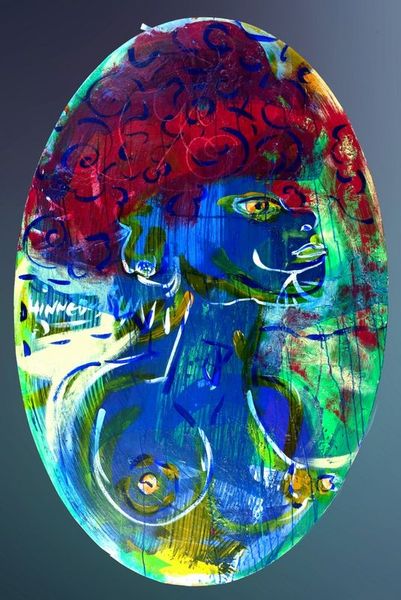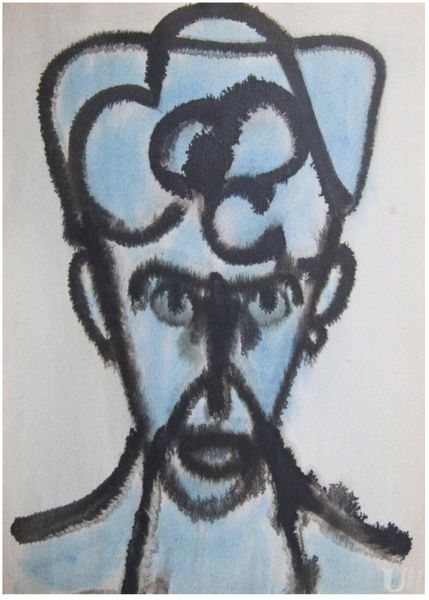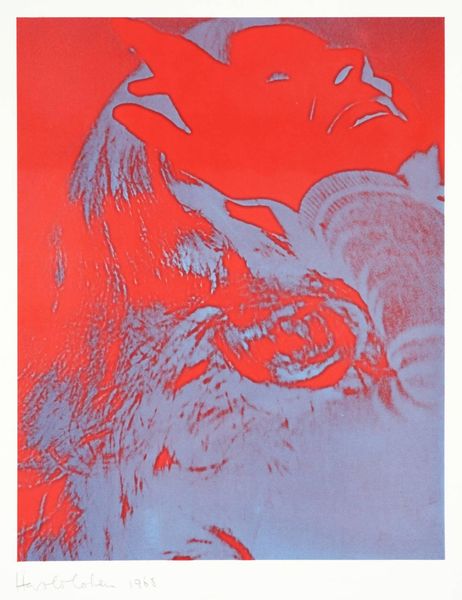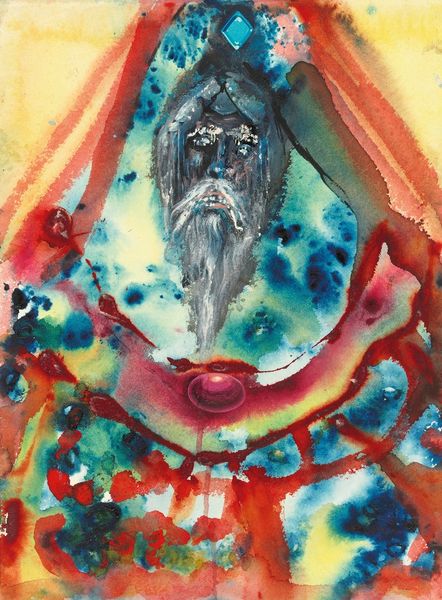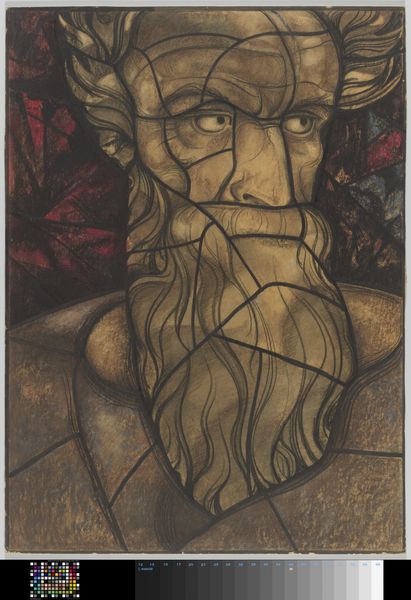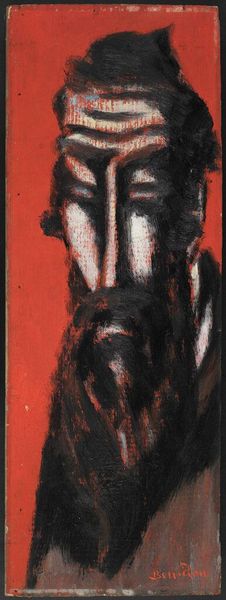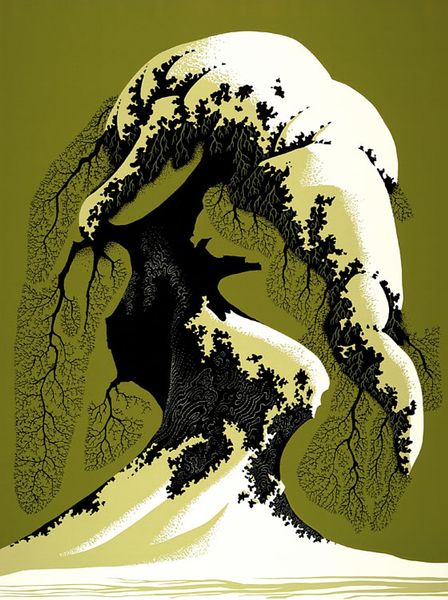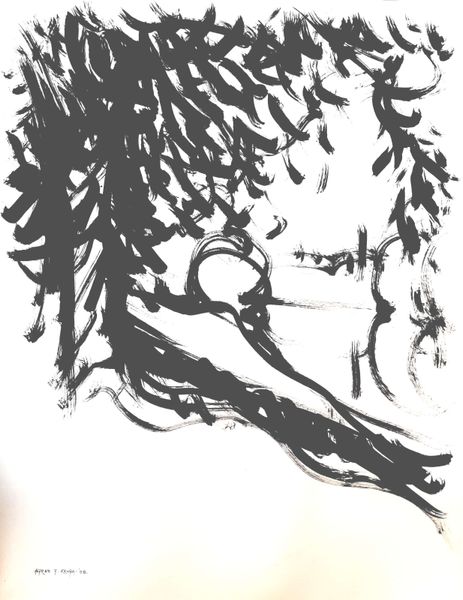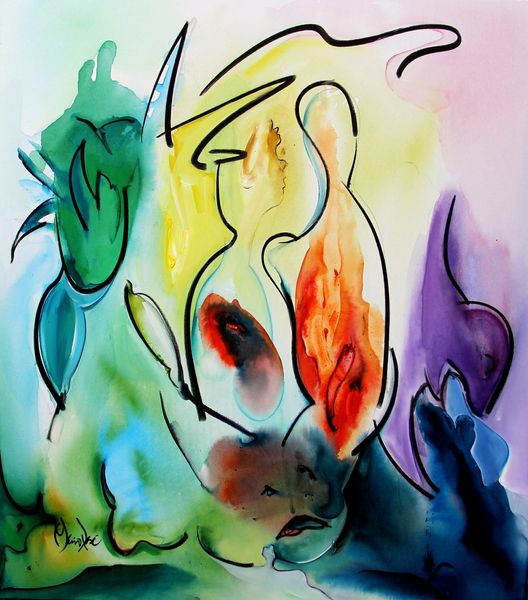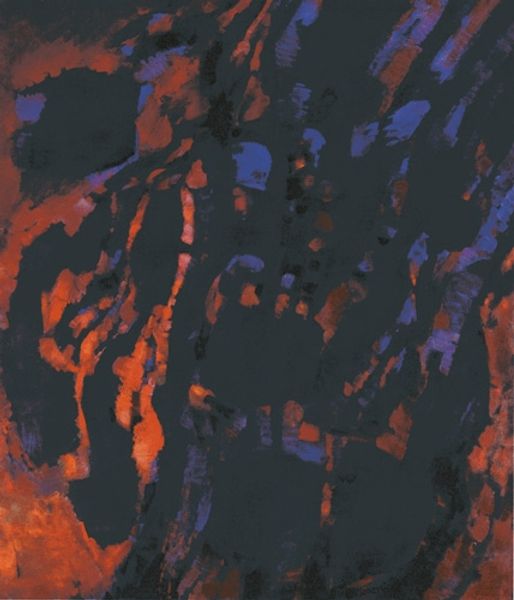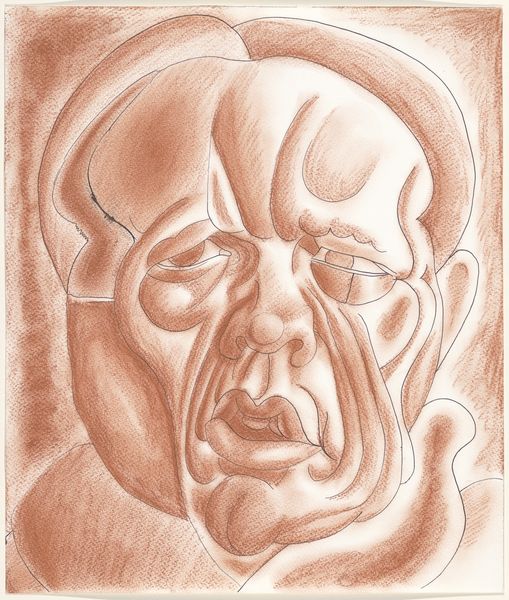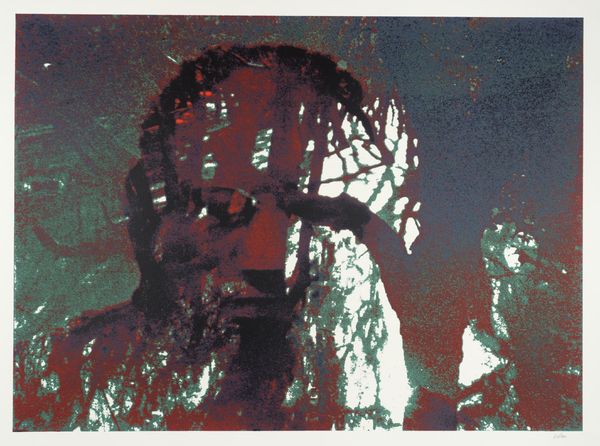
Copyright: Modern Artists: Artvee
Curator: Looking at Warhol's 1980 "Martin Buber", what first strikes you about this canvas rendered in acrylic paint and collage elements? Editor: Initially, the stark contrast—a somewhat somber mood offset by the vibrancy of the chosen blues and overlaid line work. There’s an immediate tension between the portrait’s subject, who appears to be in deep thought, and the flat, almost celebratory pop art aesthetic. Curator: Precisely. Warhol’s interest here clearly lies in disrupting traditional portraiture. The divisions created by blocks of teal and azure force a reading of the face as planes—as abstract shapes contained within a recognizable form. Note how line is deployed; almost violently scrawled over one half of the figure's face. Editor: Right. And thinking about Buber, the influential philosopher known for his dialogues on human existence, the portrait feels loaded. Is Warhol attempting a dialogue of sorts with Buber's ideas, contrasting the depths of existential thought with surface-level observations so prevalent in consumer culture? It is perhaps an intentional challenge to our expectations. Curator: That’s compelling. Consider also the use of collage. This layering and juxtaposition aligns perfectly with Warhol's career-long exploration of reproduction and simulation, mimicking the mass media’s repetitive image bombardment. Editor: Indeed, but the gesture feels different here—the brushstrokes in concert with the collage introduces an element of craft you often don't see in some of Warhol's silk-screened pieces. There's a deliberate exposure of process that seems relevant when you consider Buber’s emphasis on direct, authentic experience, as articulated in "I and Thou." Curator: Perhaps it’s a reconciliation of two seeming opposites; an interrogation of depth through superficiality. Editor: Or perhaps a reflection of how even the deepest thinkers are ultimately reduced to brands or cultural symbols in the spectacle? A kind of "Warhol-ification" of even profound figures. Curator: A fascinating perspective, bringing our attention to how artistic choices mirror the sociopolitical dynamics in ways that reward contemplation well beyond the immediately arresting colors. Editor: Yes. By understanding both Warhol's artistic strategies and Buber's philosophical concerns, we unlock rich layers of meaning that transform the artwork from just a pretty picture into a complex cultural artifact.
Comments
No comments
Be the first to comment and join the conversation on the ultimate creative platform.
